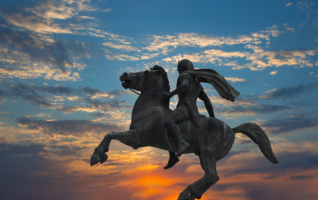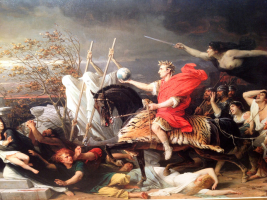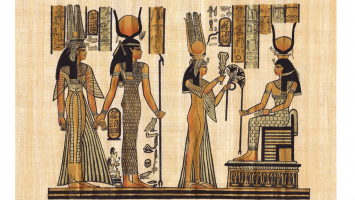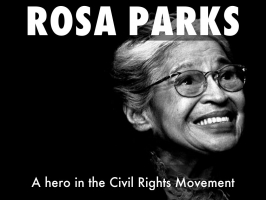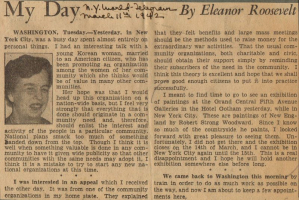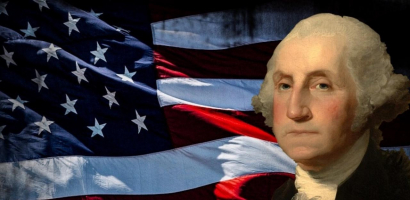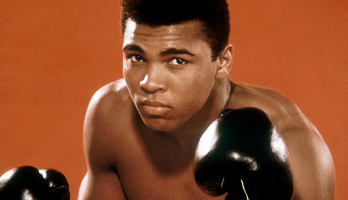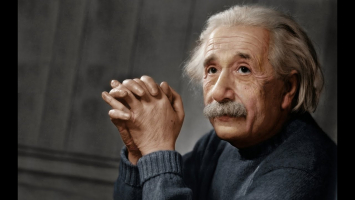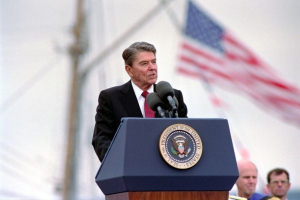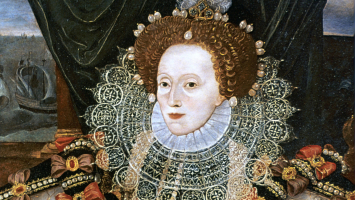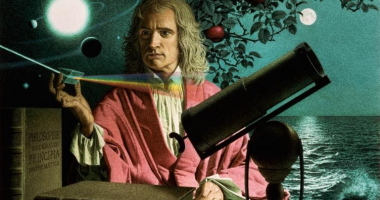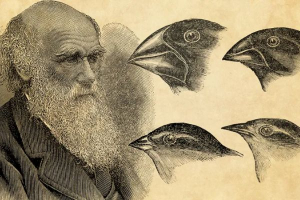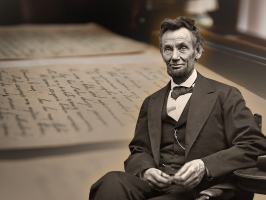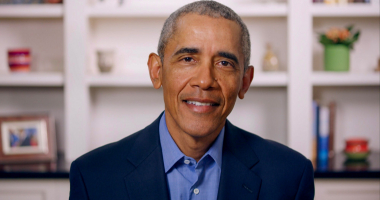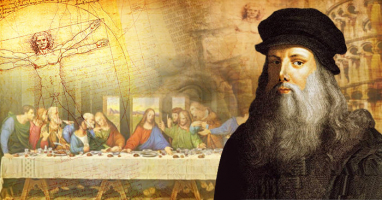Top 9 Major Accomplishments of Benjamin Franklin
Benjamin Franklin was one of the founding fathers, whose work in all fields influenced the development of the American colonies, then the free and sovereign ... read more...United States. He is a famous political figure known in American history, but Benjamin Franklin's achievements are much more. The following article of Toplist will introduce you to the major accomplishments of Benjamin Franklin.
-
The United States Declaration of Independence was composed of a group of five men, including Benjamin Franklin. Franklin was appointed to compose the Declaration of Independence alongside John Adams, Thomas Jefferson, Robert R. Livingston, and Roger Sherman, and made a number of significant alterations to what Thomas Jefferson had written.
The American Revolution had already begun when Franklin returned to Philadelphia on May 5, 1775, after his second voyage to Great Britain, with conflicts breaking out between the colonists and the British at Lexington and Concord. The main British army was forced to stay in Boston by the New England militia. The Pennsylvania Congress unanimously elected Franklin as their delegate to the Second Continental Congress, a gathering of members from the Thirteen Colonies charged with overseeing the war effort against England. He was appointed to the Committee of Five, which produced the Declaration of Independence, in June 1776. Despite the fact that he is temporarily handicapped due to gout and is unable to attend most committee meetings.
The Declaration of Independence is one of the most important papers in the world. One of five persons chosen to assist in the drafting of the Declaration of Independence, he is regarded as one of the major accomplishments of Benjamin Franklin. Taking on the duty of authoring this document was a tremendous responsibility that demonstrated Ben Franklin's importance in his life.
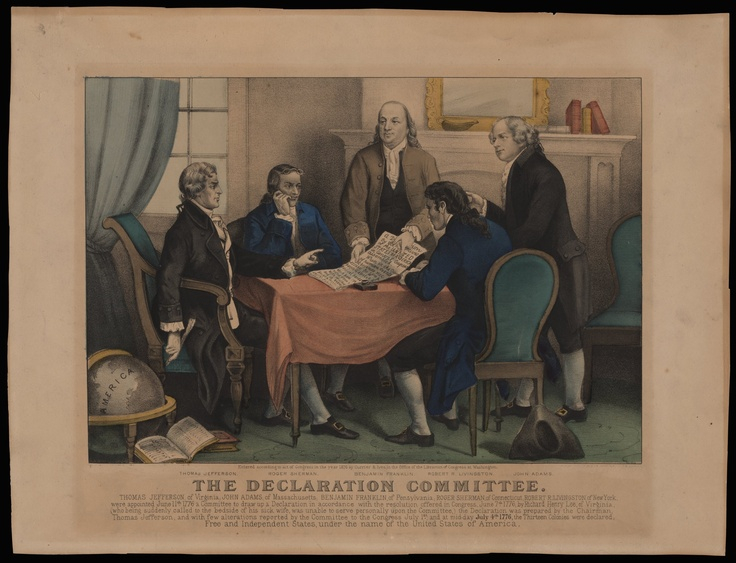
Photo: https://i.pinimg.com/ 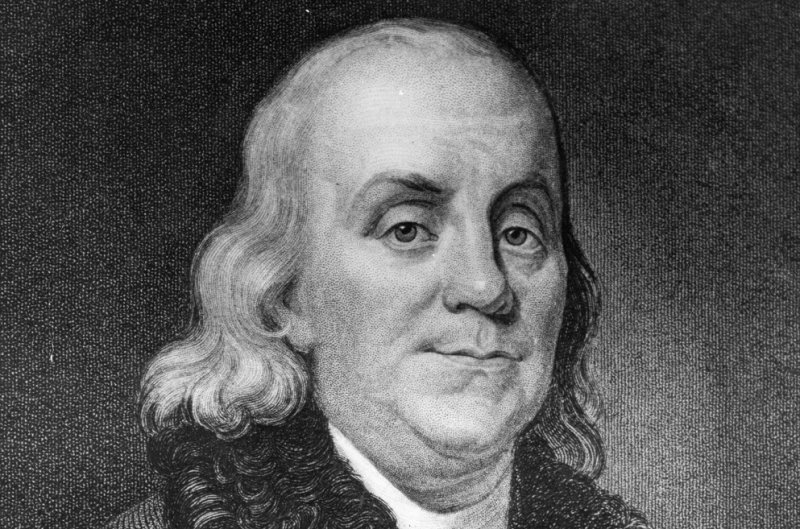
Photo: https://d.ibtimes.co.uk/ -
The release of Poor Richard's Almanac was another of the major achievements of Benjamin Franklin. His diary is immensely popular, with over 10,000 copies sold each year. Ben Franklin's Almanac revolutionized the way people learned information.
Benjamin Franklin's classic book Poor Richard's Almanac was first published in December 1732. Franklin gained fame and fortune as a result of the almanac, which was published annually for 25 years until 1758. When Napoleon Bonaparte translated it into Italian, he thought it was noteworthy, and it was the first English literary work to be translated into Slovene. Despite the fact that Franklin is the author, he adopted the pseudonym, Richard Saunders. This figure is unremarkable, yet he claims to be a philomathologist and astrologer.
With statements, he has evolved his own signature style that is basic, pragmatic, and has a sly, soft, but self-deprecating tone. Despite the fact that he never disputed being the author, his character Richard Saunders did. "Poor Richard's maxims," such as "A penny saved is two loved" (sometimes misquoted as "A penny saved is a penny earned. alright") and "Fish and tourists stink for three days," are still common in today's globe. Folklore knowledge meant being able to provide an appropriate maxim for any situation, and his audience was ready.
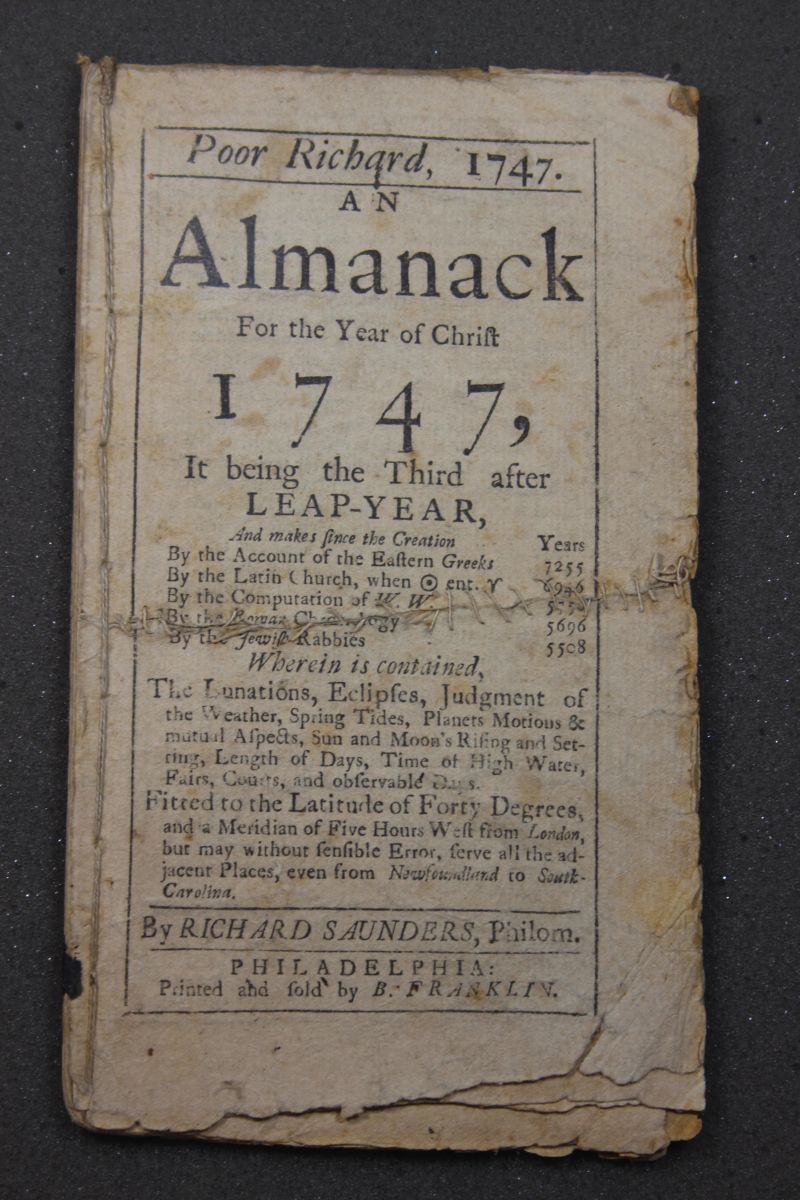
Photo: https://library.missouri.edu/ 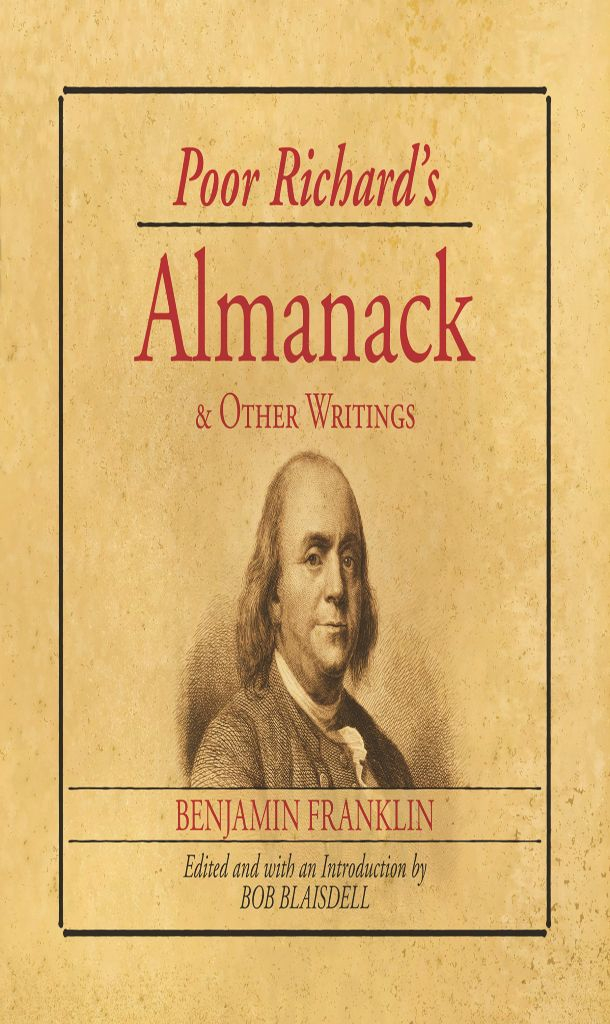
Photo: https://i.pinimg.com/ -
Benjamin Franklin was an inventor as well as a prominent political figure. Electricity fascinates him, and he believes that lightning is the same type of electricity that humans produce. Throughout his life, he conducted numerous experiments on the issue, including flying a kite during a thunderstorm and collecting an electrical charge in a Leyden jar when the kite was struck by lightning.
Franklin carried out extensive electrical investigations. He challenged the notion that electricity was made up of two opposing forces; proposed that it moves from one body to another; coined terms such as positive, negative, battery, charge, and conductor; proposed that lightning is electricity; and was the first to discover the principle of charge conservation. His research led to the development of a device that might protect structures from the destructive power of lightning. Conductors having pointy tips, rather than smooth tips, he claims, can discharge silently and over greater distances. "Upright iron bars, sharpened like needles and gilded to prevent rust, and from the base of those rods a wire leading down the building's exterior into the ground;... These spikes probably won't silently draw Electric Flame out of the Clouds before it gets dark enough to strike, and thus protect us from The most unexpected and terrible adversity!" he speculated. As a result, lightning rods were designed to safeguard structures by grounding them.
He was one of the few people who didn't merely believe what everyone else said. He is always on the lookout for new things to learn. This was a significant development since it enabled Ben Franklin to safeguard buildings. Finally, thanks to Ben Franklin, we now have a better understanding of electricity. One of the breakthroughs in the major accomplishments of Benjamin Franklin was the lightning rod.

Photo: https://www.timetoast.com/ 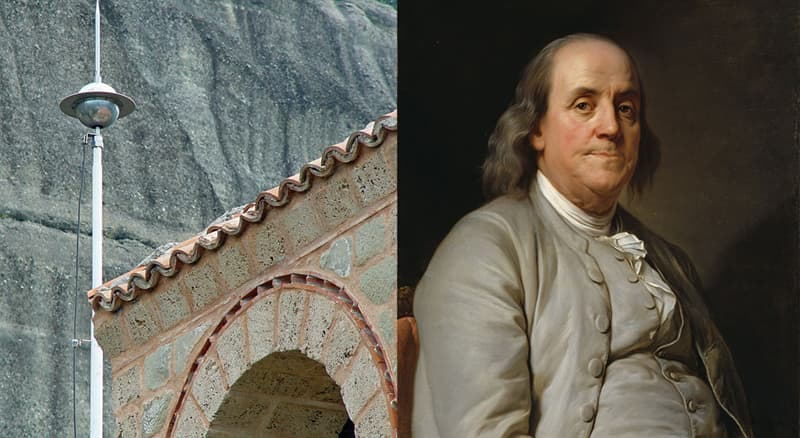
Photo: https://cdn.quizzclub.com/ -
The Bifocal Lenses, which were eyeglasses with the top half for viewing distances and the bottom half for reading, were one of Franklin's most important innovations. Franklin had to wear a variety of spectacles to deal with his vision problems when he was younger. He was inspired to create the bifocal lens as a result of this. This is a lens that lets you change your appearance depending on which half of the lens you're looking through. This indicates that the lens's bottom and top are not identical.
Franklin chose to use his lenses to see the expressions of the French speakers in court because that was the only way he could comprehend them. Historians have suggested that others may have invented bifocals before Franklin; nevertheless, correspondence between George Whatley and John Fenno, editors of the United States Gazette, reveals that Franklin invented bifocals 50 years earlier than previously assumed. The term bifocal was coined in 1824 by John Isaac Hawkins, the developer of the trifocal lens, and is credited to Benjamin Franklin. Franklin's bifocal design has virtually stayed untouched until the present day.
It can be said that Franklin is a multi-talented person, not only involved in politics or writing, but he is also a great inventor. His inventions and inventions have helped people a lot not only in the past but also in the present. The invention of bifocal lenses is considered one of the major accomplishments of Benjamin Franklin.
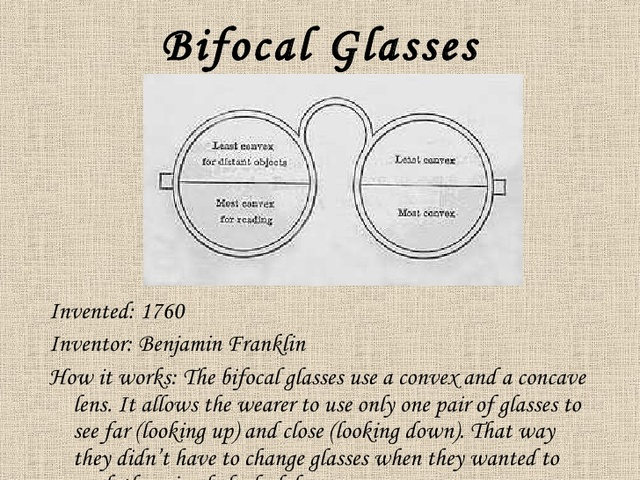
Photo: https://s3.amazonaws.com/ 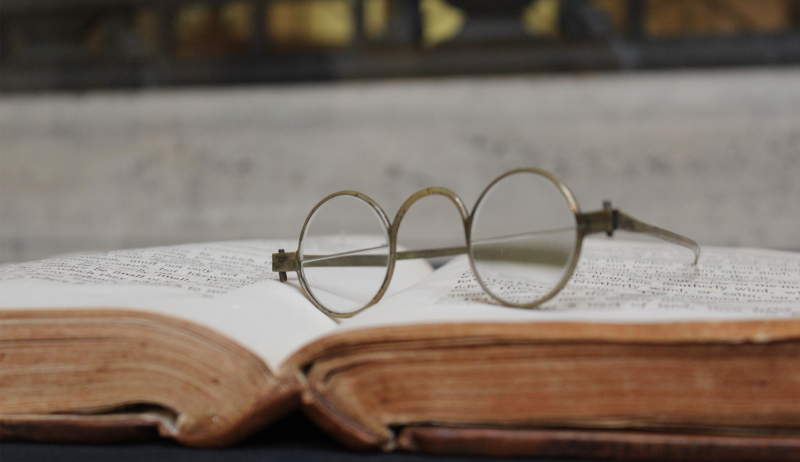
Photo: https://www.fi.edu/ -
Franklin came to England in 1757 to act as a diplomat for the Council of Pennsylvania in a dispute with descendants of the Penn family about who should represent the Colony. He eventually became a member of the Massachusetts, Georgia, and New Jersey legislatures.
Franklin was dispatched as a colonial envoy to England in 1764, this time on King George III's advice to form a central control committee of England in Pennsylvania, apart from the "priority" heirs. He also served as a colonial envoy to Georgia, New Jersey, and Massachusetts during this time. Despite charges from various factions in the United States that he was engaged in its creation, he vigorously opposed the Stamp Act in London. The Stamp Act, passed by the British Parliament in 1765, imposed a direct tax on British America's colonies. In the United States, there has been strong opposition to the Act. Franklin led the American cause in London, and the Stamp Act was abolished in March 1766. As a result, Franklin became the primary advocate for American interests in the United Kingdom. His opposition to the Stamp Act, and later the Townshend Law of 1767, put an end to his dream of becoming a British government official, as well as his association with pro-independence elements. It also caused an irreversible rift between him and his son William, who remained a staunch supporter of the British Empire.
It can be seen that Franklin's efforts have paid off. He is also considered a leading spokesman. And it can be seen that contributing to the abolition of the stamp law is considered one of the main accomplishments of Benjamin Franklin.
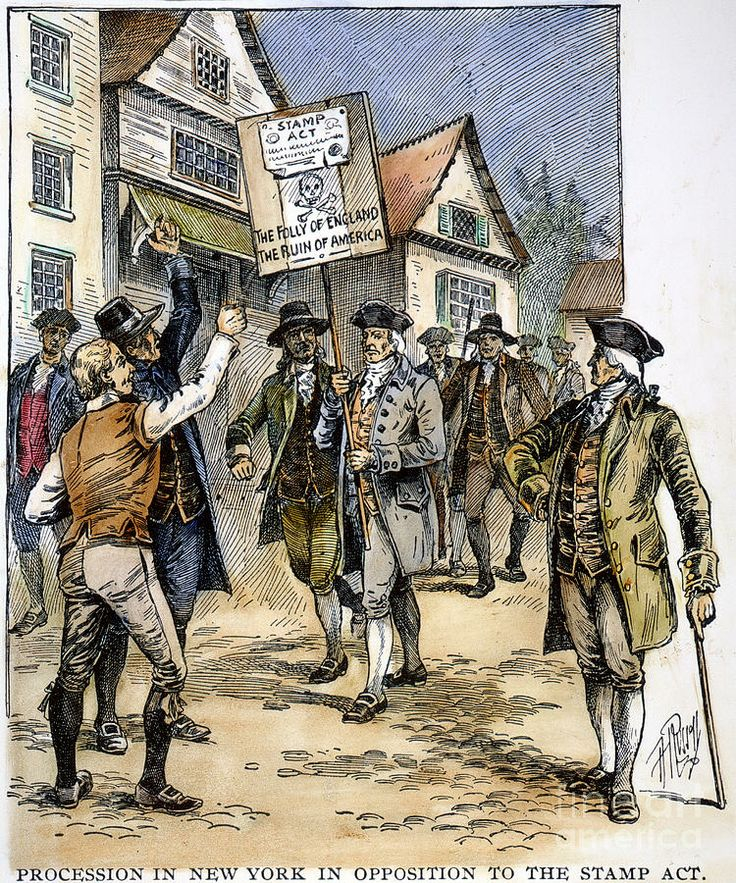
Photo: https://www.topinspired.com/ 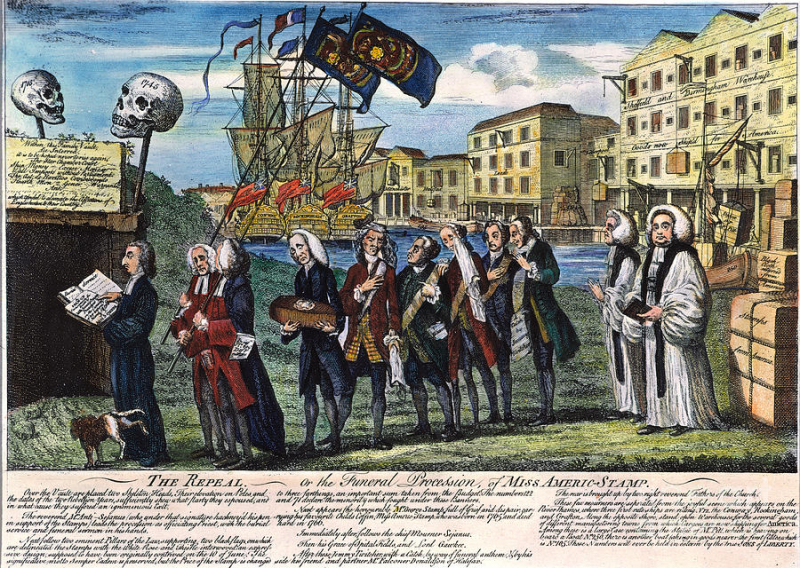
Photo: https://pbcdn1.podbean.com/ -
Although it may appear that political cartoons have been around for a long time, they were actually started by Ben Franklin. He created the first political cartoon that was ever published. Using humor to express political themes was something Franklin had never done before. This was a huge success not just because he published The Pennsylvania Gazette personally, but also because he produced several pieces for the daily under various aliases. He became well-known for his political cartoons.
Franklin and Hugh Meredith bought The Pennsylvania Gazette in October 1729. On May 9, 1754, Franklin's "Join or Die," the first political cartoon in America, was published in newspapers. During the American Revolution, the cartoon became a symbol of colonial unity and is still popular today. The Pennsylvania Gazette rose to prominence as one of the most widely circulated newspapers in the United States, where it stayed until around 1800. Not only that but by the time it was published, it had become a symbol of unification.
The political cartoon is a woodcut depicting a serpent divided into eighths, each section identified with the initials of a different American colony or region. New England was depicted as a single piece rather than the four colonies it was at the time. Because Delaware is a part of Pennsylvania, it is not included individually. Georgia, on the other hand, was utterly overlooked. As a result, instead of the customary 13 colonies, it has eight snake segments. Only colonies claiming to share a common American identity are shown on the poster. Franklin's commentary on the "disintegration" of the colonies was accompanied by a cartoon that emphasized the significance of colonial solidarity. During the American Revolutionary War, it became a symbol of colonial freedom.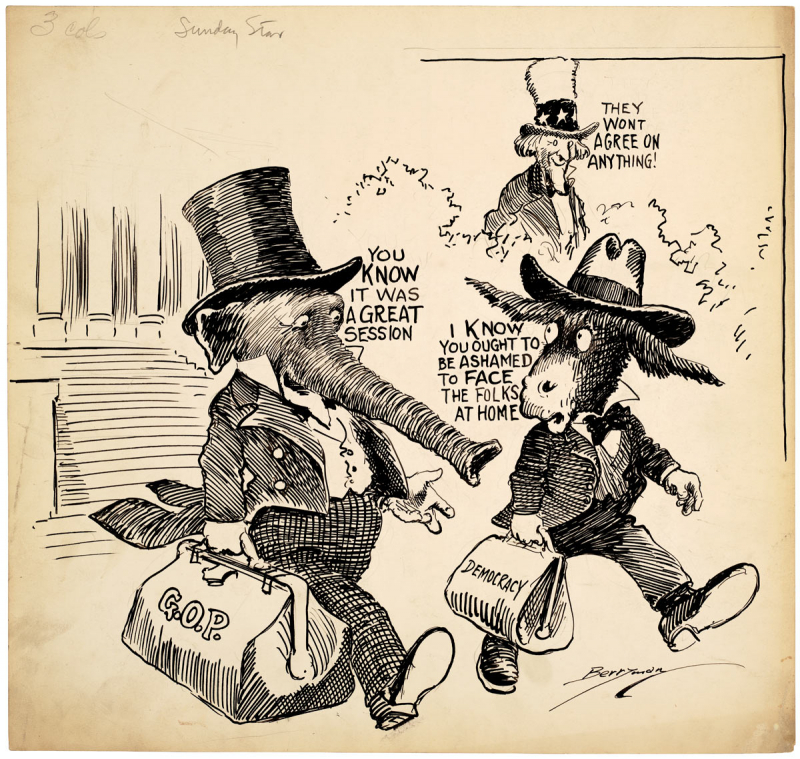
Photo: https://www.archives.gov/ 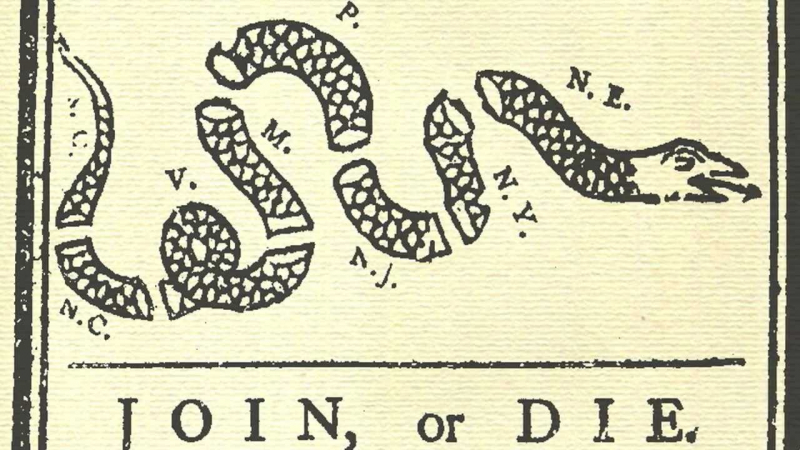
Photo: https://i.ytimg.com/ -
Franklin was also instrumental in the establishment of the colonial mail system. He was named postmaster of Philadelphia by the British in 1737, and then postmaster-general for all of the American colonies in 1753. He devised several methods to improve mail delivery while in this position, but he was fired by the British in 1774 because he was too friendly to colonial interests. Franklin was named the first postmaster general of the United States by the Continental Congress in July 1775, giving him jurisdiction over all post offices from Massachusetts to Georgia. He held the position until November 1776, when his son-in-law took over.
His pupil, William Goddard, believed that it was his ideas that shaped the postal system and that the appointment should have been his, but he graciously relinquished it to Franklin, who was 36 years his senior. Franklin, on the other hand, designated Goddard as Postmaster General, gave him a signed travel ticket, and told him to investigate and inspect numerous post offices and postal routes as he saw appropriate. The newly constructed postal system was renamed the United States Postal Service, which still exists today. On July 1, 1847, the first US postage stamps were produced, featuring portraits of Benjamin Franklin and George Washington.
It can be seen that Benjamin Franklin is a very talented person, perhaps he can handle anything. And the post general manager job is no exception. And his first postmaster general is considered one of the major accomplishments of Benjamin Franklin.
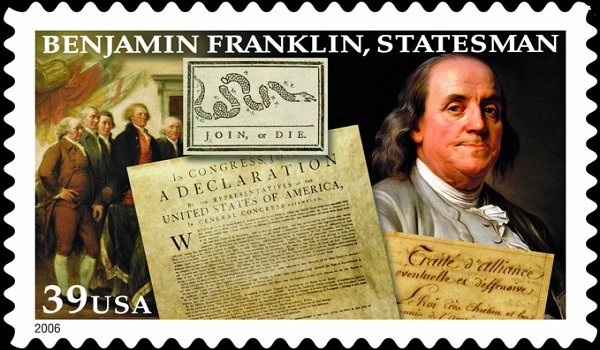
Photo: http://www.benjamin-franklin-history.org/ 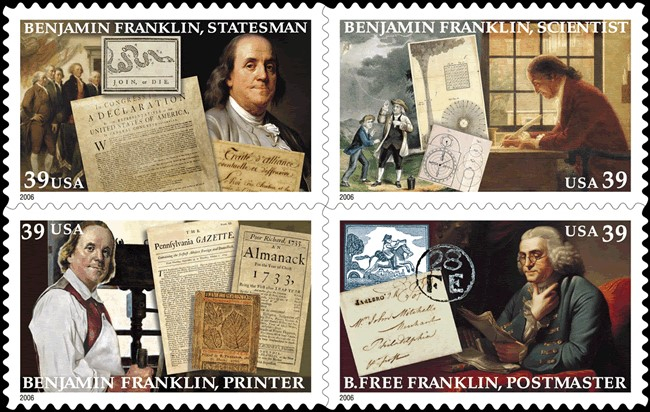
Photo: https://about.usps.com/ -
Benjamin Franklin was the founder of the University of Philadelphia, which was founded in 1740. Since the School is regarded as one of the world's greatest universities. Franklin was also the first president of the American Philosophical Society, which he helped organize.
The University of Pennsylvania (University of Pennsylvania) is a research university in Philadelphia, Pennsylvania. Before the United States Declaration of Independence, the university was known as the College of Philadelphia, and it was one of nine colonial colleges that were granted licenses. Similar to an arts curriculum, Penn's founder and first president, Benjamin Franklin, campaigned for an educational program that prepares leaders in trade, government, and public service. With a realistic viewpoint, he is a modern liberal. Penn was one of the first colleges to adopt a multidisciplinary approach to education. This concept, which was developed by European institutions, is distinguished by the concentration of multiple schools within a single university. School of Communication, School of Arts and Sciences, School of Dentistry, School of Design, School of Engineering and Applied Sciences, School of Education, School of Law, School of Nursing, School of Medicine, and School of Nursing are among Penn's constituent schools. Wharton School of Business, School of Policy and Practice, and School of Veterinary Medicine One could argue that the remarkable development of the University of Pennsylvania is one of Benjamin Franklin's most notable accomplishments.
There are many institutions with illustrious histories, but one of the most prominent figures in the founding of a university was Ben Franklin. He was the driving force behind the founding of this outstanding university. He is the creator of this university, which is a globally known research institution. It's only natural that the college Franklin founded would be known for its emphasis on the pursuit of knowledge.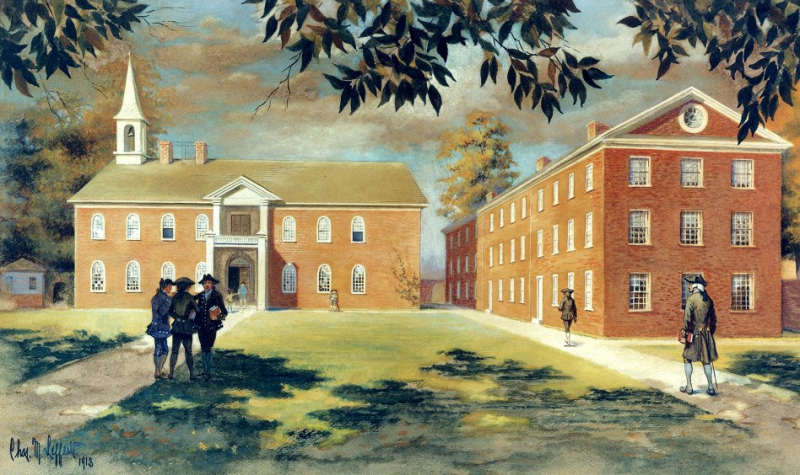
Photo: http://hiddencityphila.org/ 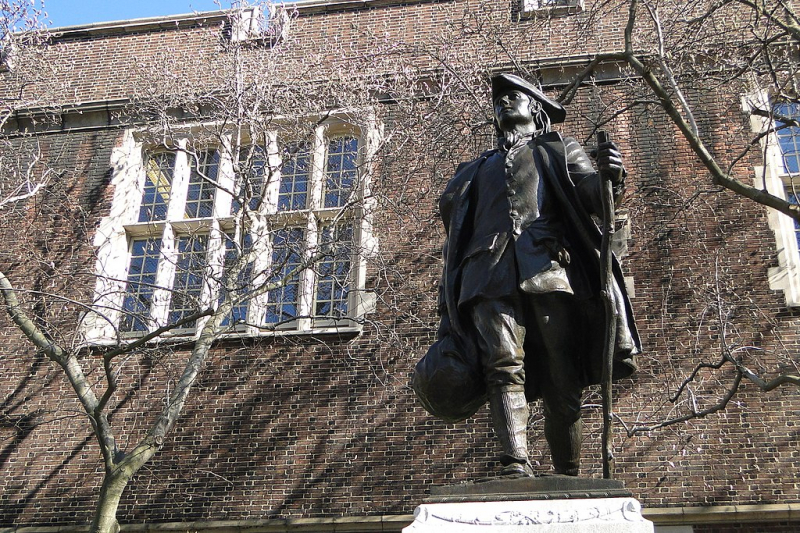
Photo: https://upload.wikimedia.org/ -
During the Revolutionary War, the American colonies were able to defeat the British with the assistance of the French. If you're wondering where they got it from, the answer is simple: Benjamin Franklin.
Franklin was appointed as the first American Ambassador to France in December 1776. He was instrumental in the development of cordial relations between the US and France. The victory of the American colonies against Britain in the Revolutionary War was made possible by French support. Franklin was one of the United States representatives who signed the Treaty of Paris in 1783, which ended the war and forced Britain to recognize the American colonies as free, sovereign, and independent states, among other things. Franklin was the only Founder to sign all four important documents that shaped the United States' founding: the Declaration of Independence, the Treaty of Alliance with France, the Treaty of Paris, and the United States Constitution.
America had a man as multi-talented as Benjamin Franklin. He not only has great inventions that help people's lives but is a brave politician. And he was a great American diplomat. His diplomatic ability has brought countless achievements. So that Benjamin Franklin became the first American diplomat, and this is also one of his major achievements of Benjamin Franklin.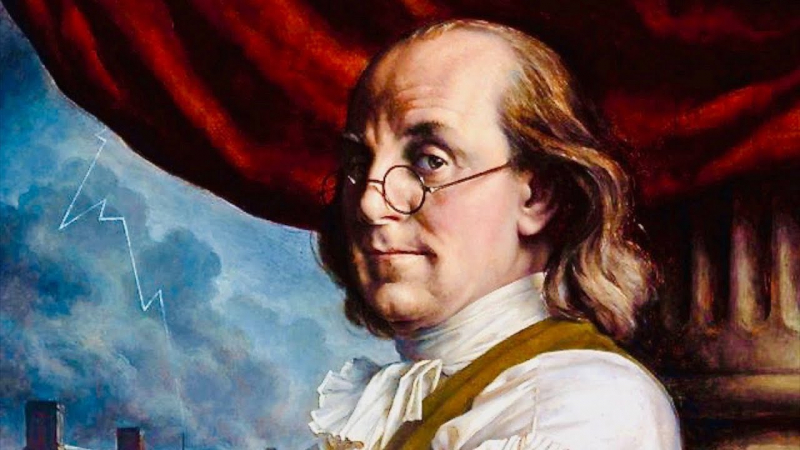
Photo: https://i.ytimg.com/ 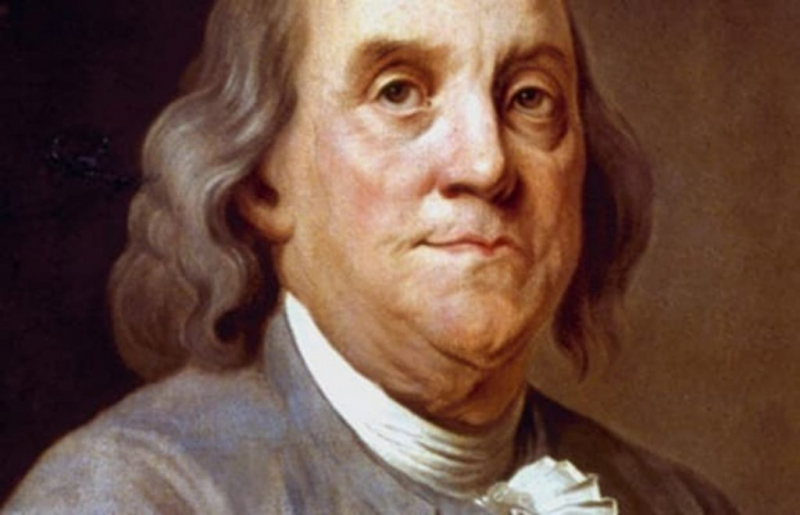
Photo: https://brewminate.com/











